What is Liposuction?
Liposuction is a fat extraction procedure used to remove unwanted fat deposits. The procedure was developed for full body usage in 1977 by Dr. Yves Gerard Illouz, a plastic surgeon in Paris. It was introduced in the United States in 1982, and is now the most commonly performed plastic surgery procedure. The procedure eliminates bulges of fat from different areas of the body with minimal scarring. The equipment used now has been dramatically refined to make the procedure safer and more effective. When the procedure is performed with thin 3mm cannulas, you should not need lymphatic massages post operatively, as the results will already be smooth and even.
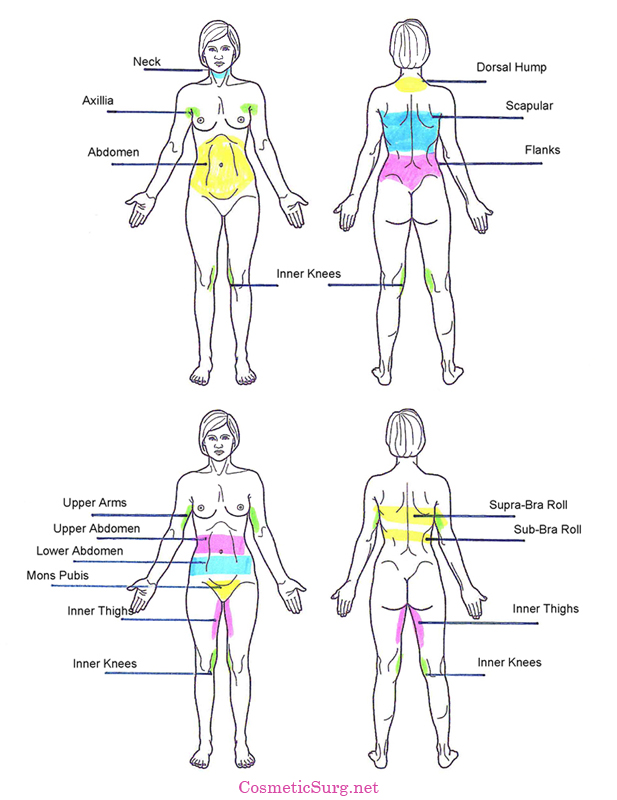
Liposuction is not a substitute for dieting and exercising. Areas which are commonly liposuctioned include the following:
- Abdomen
- Flanks (love handles)
- Upper back
- Scapular
- Arms
- Dorsal hump
- Neck
- Outer and inner thighs
- Inner knees
Changes in your body contour following the liposuction procedure can be quite dramatic. Clothing will fit differently and you will look slimmer. When performed by a well trained board certified plastic surgeon, the liposuction procedure is usually well tolerated and very safe. Liposuction is often performed in conjunction with other procedures such as the Tummy tuck, or breast procedures.
What is Lipo 360?
Lipo 360 is the marketing term applied to Liposuction of the abdomen and flanks, such that fat is extracted around the entire circumference of your waist, to include the front and back. In other words, this is liposuction performed all the way around, or 360 degrees, like a full circle.
What problems does a Liposuction address?
How do I get rid of these saddle bags? -a Baltimore patientPatients are a candidate for Liposuction if they have pockets of fats that do not respond to exercise or diet. These fat pockets are usually areas of 'slow burning' fat. The body has certain places where it prefers to store 'slow burning' fat. This varies from individual to individual. These bulges of slow burning fat give the figure it's particular shape, whether it be an 'hourglass' or a 'pear' figure. Unfortunately, if you don't like where these bulges exist, they can be hard to get rid of since they are 'slow burning' fat. Even with diet and exercise, you will probably lose weight in other areas before you lose those bulges. Liposuction targets these areas specifically and can remove the fat deposits.
Liposuction can not solve these problems
- Obesity
- Loose hanging skin
- Poor muscle or skin tone
How is the Liposuction procedure performed?
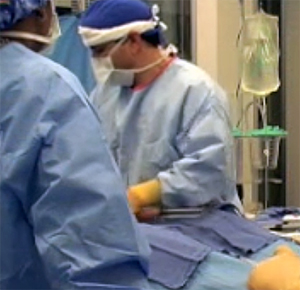 More than any other cosmetic surgery procedure, there are many different ways to perform liposuction. Not only does the technique vary among surgeons, but the instruments and equipment used to perform the procedure are completely different. In addition, each technique has it's own risks and benefits.
More than any other cosmetic surgery procedure, there are many different ways to perform liposuction. Not only does the technique vary among surgeons, but the instruments and equipment used to perform the procedure are completely different. In addition, each technique has it's own risks and benefits.
Various Liposuction techniques
The most common techniques of liposuction are Tumescent liposuction and Laser liposuction. The 'name' of each technique references different features of the procedure. In the case of the two common techniques, 'tumescent' refers to the anesthetic injected to numb the area before the fat is taken out, and 'laser' refers to the fat extraction method used. Generally speaking, the various liposuction techniques are defined by three components: type of anesthetic to numb surgical area, suction method to extract or destroy the fat, and cannula size for fat extraction. Below is a more complete description of each of these components of the Liposuction procedure. My preferences are listed in bold.Anesthetic
This is the type/amount of anesthetic injected into the tissues to numb the area before extraction of the fat. It is also referred to as the 'infiltrate solution.' Additives to the solution such as lidocaine and epinephrine dramatically help diminish blood loss during the procedure. The Tumescent technique is the one whose infiltrate solution contains both lidocaine and epinephrine. When removing large quantities of fat with Liposuction, diminished blood loss is very important for your safety. Types of anesthetic include:- Dry: Performed with no infiltrate solution. It is only recommended for greater than 100 cc of fat extraction
- Wet: Uses infiltrate solution with no or few additives
- Superwet: Uses infiltrate solution with small quantity of epinephrine
- Tumescent: Uses infiltrate solution with small quantities of lidocaine and epinephrine, in Ringer's lactate
Suction/extraction method
This is the type of instrument or equipment used for the fat removal. Manual suction and power assisted physically extract the fat. Ultrasonic and laser liposuction work by dissolving/destroying fat cells. In summary the types include:- Manual suction via syringe
- Power assisted
- Ultrasonic
- Laser
Cannula size
The cannula is the long slender rod that the surgeon uses to dislodge and extract the fat. While a larger cannula can remove fat quicker, the thinner cannula size will yield smoother results. The diameter size (in mm) of the cannula used to extract or dissolve the fat include the following:- Thin, 3 mm cannula diameter
- Large, 5 mm cannula diameter
Tumescent liposuction with manual suction, thin cannulas
After performing Liposuction for over 25 years, my preference is the Tumescent technique with manual or power assisted suction, performed with thin cannulas. This technique is also referred to as the Coleman technique, developed several decades ago by Sydney Coleman, MD, a New York plastic surgeon.In comparison to other techniques, it's not even close! The Tumescent technique with thin cannulas is my exclusive choice of technique for the liposuction procedure as it provides the best results with the best safety profile. When Liposuction is performed with this method there is no need to have lymphatic massage post operatively.What type of anesthesia is used for my sedation?
This refers to the anesthesia administered to you to put you to sleep or relax you. This is different from the anesthetic used for the infiltrate solution. There are generally three choices of sedation:- Local
- monitored IV sedation
- General Anesthesia
Inside the Operating Room
After the anesthesiologist has administered IV sedation to put you to sleep, the area where the fat is being removed will first be injected with tumescent solution. This solution contains very small, controlled quantities of epinephrine and lidocaine. This tumescent solution will numb the area, but it also provides an important safety function in that it reduces bleeding while the fat is being removed. The smaller blood loss volume means that the procedure is safer and less risky. In addition, with the tumescent technique larger quantities of fat can be extracted safely compared to other techniques. Once the area is numbed with the tumescent solution, I insert thin 3mm cannulas through tiny incisions to remove the fat. These tiny incisions are only 1/4" - 1/2" long and they are placed very strategically into hidden areas such as the buttock fold. In nearly all patients, these tiny incisions close completely and do not leave any type of mark or scar. To remove the fat I use both manual and suction assisted techniques. Once the cannula is placed through the tiny incisions, the cannula is moved in a controlled back and forth motion to dislodge the fat. The excess fat is then sucked through the cannulas using a surgical vacuum or a syringe which is attached to the cannula. With both types of extraction instruments, I use very precise extraction pressures. Fat is collected in 1 liter medical containers. Each liter holds 1000cc of fat.How much fat can be removed in one operative session?
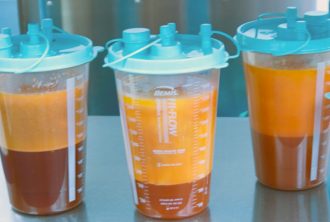 During my surgical career, I have safely removed up to 10 liters (10,000 cc) of fat. This is an unusually large amount, but I mention it to illustrate the historical safety of large volume fat removal with the tumescent procedure.
In my practice now, I routinely remove 4-5 liters (4000 cc-5000 cc) of fat for most procedures. Extraction of these fat volumes and higher quantities can be done safely using the tumescent technique. These higher amounts can be safely extracted because the Tumescent solution prevents blood loss during the surgery.
With Tumescent technique the blood loss is kept to an absolute minimum, allowing for a large amount of fat extraction. Other techniques can not remove high fat quantities safely because without the tumescent solution, too much blood is mixed in with the fat. If there is too much blood loss during surgery, the patient may need a blood transfusion after surgery. The tumescent solution dramatically reduces the blood loss during surgery. In summary, other techniques are more limited to the amount of fat that can be extracted safely.
During my surgical career, I have safely removed up to 10 liters (10,000 cc) of fat. This is an unusually large amount, but I mention it to illustrate the historical safety of large volume fat removal with the tumescent procedure.
In my practice now, I routinely remove 4-5 liters (4000 cc-5000 cc) of fat for most procedures. Extraction of these fat volumes and higher quantities can be done safely using the tumescent technique. These higher amounts can be safely extracted because the Tumescent solution prevents blood loss during the surgery.
With Tumescent technique the blood loss is kept to an absolute minimum, allowing for a large amount of fat extraction. Other techniques can not remove high fat quantities safely because without the tumescent solution, too much blood is mixed in with the fat. If there is too much blood loss during surgery, the patient may need a blood transfusion after surgery. The tumescent solution dramatically reduces the blood loss during surgery. In summary, other techniques are more limited to the amount of fat that can be extracted safely.
Is there a limit as to how much adipose fat can be liposuctioned in one operative session?
Yes, there is. During 2014, the AAAASF (international organization which accredits outpatient surgery centers) recently imposed a limit on the amount of fat that can be extracted at any accredited surgery center in one surgical session. Regardless of the technique that is used, the maximum limit of fat extraction is now 5000 cc, or 5 liters, of fat. Therefore, if the surgery center is accredited by the AAAASF, the maximum amount of fat that can be removed in one operative session is 5000 cc, unless the Facility provides a 23 hour overnight stay. Fortunately, the 5000 cc fat extraction amount is a reasonable limit, and only seldom will someone need a second operative session to remove more fat.How much fat is typically taken from each area liposuctioned?
If you ask a surgeon how much fat he removed, he will normally reply back with the volume, or # of cc of fat removed. However, most patients want to know what this fat tissue weighs on the scale. Listed below are typical amounts of fat removed (in pounds!) from common liposuction areas. A more thorough description can be found in my 2012 blog post, How much fat is taken out during Liposuction? Note that these amounts are the weight of the fat only, and do not include the weight of the tumescent fluid mixed in with the fat extraction:- Stomach: 2 pounds
- Love handles (flanks): 1-2 pounds
- Inner thighs: 1 pound
- Outer thighs: no more than 2 pounds
- Upper back: up to 1.5 pounds
- Upper arms: up to 1 pound
What is the importance of thin cannulas?
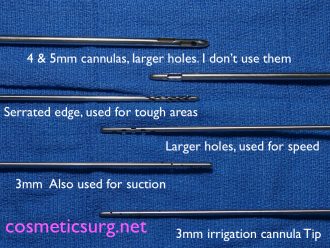 Thin 3 mm cannulas allow your surgeon to fine tune the contour of your body. It's the difference between using a fine paint brush vs a large paint brush to paint letters on a sign. You can get more detailed and fine tuned results with a slimmer instrument. The only downside of your surgeon using a thin cannula is that the fat extraction will take longer than removal of the same quantity with a fat cannula. However, getting a much smoother result is well worth the extra cost for a little extra operating room time! Furthermore, you should not need lymphatic massages after your liposuction with this technique!
Thin 3 mm cannulas allow your surgeon to fine tune the contour of your body. It's the difference between using a fine paint brush vs a large paint brush to paint letters on a sign. You can get more detailed and fine tuned results with a slimmer instrument. The only downside of your surgeon using a thin cannula is that the fat extraction will take longer than removal of the same quantity with a fat cannula. However, getting a much smoother result is well worth the extra cost for a little extra operating room time! Furthermore, you should not need lymphatic massages after your liposuction with this technique!
Laser or Ultrasonic liposuction
I do not perform laser liposuction as I think it is harmful in many cases. To read more about why I think small cannula tumescent liposuction is better than ultrasonic or laser liposuction watch the video, Tumescent lipo vs. Laser lipo - Which is the best?.What are the preoperative requirements?
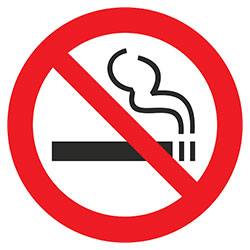 Your surgeon should provide you with information about the procedure, as well as a copy of the ASPS Informed Consent so you can read it carefully in advance of your surgery. This document will list all the possible risks and complications. Preparations for this procedure involve the following:
Your surgeon should provide you with information about the procedure, as well as a copy of the ASPS Informed Consent so you can read it carefully in advance of your surgery. This document will list all the possible risks and complications. Preparations for this procedure involve the following:
- Your BMI (Body Mass Index) must be less than 35 kg/m2. This is calculated based on your height and weight, and is important to reduce the risk of post op complications.
- Quit smoking 2 weeks prior to surgery.
- Read the Informed Consent document which lists the possible risks and complications for the surgery. Make a list of questions.
- Stop taking multivitamins, herbals, and aspirin two weeks prior to surgery.
- Within 30 days of your surgery date, get a medical clearance for surgery with a Physical examination (H&P) and CBC (anemia detection).
- Schedule a pre-op office appointment with the surgeon to review the surgical plan and sign the Informed Consent forms.
- Get all of your prescriptions filled out before your surgery date.
- Do not drink anything (NPO) after midnight the night before surgery.
Special Note: check the credentials of your surgeon and the facility before having Liposuction!
There are lots of unqualified physicians performing the Liposuction procedure! Lipo 360 is promoted heavily on social media platforms such as Instagram! However, some doctors doing this procedure have not even completed a surgical residency! Do not be fooled by flashy Instagram accounts, or the fact that celebrities endorse the doctor. Credentials matter! Before your Liposuction procedure, be sure to confirm that your surgeon is board certified by the American Board of Plastic Surgery and that the Facility (the Operating Room) where you will have your surgery is an accredited surgery center. You should ask this question to your surgeon. The most highly recognized accreditation agencies are Medicare, AAAASF, and JCAHO. Be sure that your facility is accredited by at least one of these organizations! In many cases, a facility will have accreditation from Medicare, and either AAAASF or JCAHO. Our surgery center is accredited by both Medicare and the AAAASF.What is Liposuction Post-Op recovery like?
 Prior to transferring you from the operating room to the recovery room, we will place you in a compression garment, which was custom ordered for you prior to surgery. I will also insert Topifoam pads inside the garment to ensure the most even healing possible. Since your procedure is performed with IV anesthesia instead of General anesthesia, most patients are discharged from the recovery room within one hour of the surgery.
For the next 24 hours, it is likely that you will have some fluid discharge from the tiny incisions that were made to excise the fat. The fluid that leaks is light pink in color as it is diluted blood and tumescent solution. This is completely normal and you should not be alarmed. You will be sore for the first few days following your liposuction surgery and will have some bruising. You will be given prescription pain medication to alleviate discomfort during the first week of your recovery.
Prior to transferring you from the operating room to the recovery room, we will place you in a compression garment, which was custom ordered for you prior to surgery. I will also insert Topifoam pads inside the garment to ensure the most even healing possible. Since your procedure is performed with IV anesthesia instead of General anesthesia, most patients are discharged from the recovery room within one hour of the surgery.
For the next 24 hours, it is likely that you will have some fluid discharge from the tiny incisions that were made to excise the fat. The fluid that leaks is light pink in color as it is diluted blood and tumescent solution. This is completely normal and you should not be alarmed. You will be sore for the first few days following your liposuction surgery and will have some bruising. You will be given prescription pain medication to alleviate discomfort during the first week of your recovery.
Post-Operative Liposuction recovery instructions include the following:
- Day 1-5: Rest at home , drink plenty fluids, and do not remove the compression garment! No showers!
- Day 1-Day 14: Call your surgeon immediately if you develop a fever greater than 101 degrees F, as this might be indicative of an infection
- Day 5: Office visit follow up to remove the garment and topifoam pads. You can now remove your garment daily to take a shower.
- Day 5-14: Garment should be worn 24 hours a day. Engage in only walking and stretching exercises
- Week 2: Resume work if physical activity is limited
- Week 3-4: Garment only needs to be worn daily for 12 hours
- Week 4: Resume normal activity and exercise
Will I need to have lymphatic massages following my liposuction procedure?
NO, my patients do not need massages following surgery, as you should not accumulate any fluid because I use thin cannulas. Some surgeons require the patient to get massages because they use thicker cannulas which create dead space once the cannula is removed. Fluid can accumulate in those dead spaces. The massages are meant to squeeze out the fluid from those spaces so you do not get hematoma. Thus, beware if your surgeon wants you to have massages after Liposuction! This is likely because they are using bigger cannulas! To read more about this, please see my recent blog post here.Will I have drains after my Liposuction procedure?
No. You will not have drains following Liposuction because Dr. Rodriguez uses thin 3mm cannulas. You will not be accumulating the same amount of fluid as surgeons who use larger cannulas. However, you are required to wear the medical grade compression garment continuously for the first five days post op. These garments are included in your quote. The garment will ensure that you heal evenly.What are the risks and possible complications?
Minor Liposuction complications can include
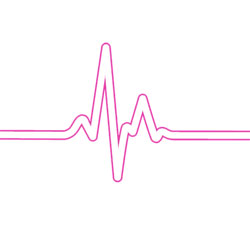
- Irregular contours or uneven results that require a revision
- Hematoma or fluid collection
- Seroma
Severe Liposuction complications can include
- Skin necrosis
- Infection
- Lidocaine toxicity
- Pulmonary embolism
How much does Liposuction cost?
The cost is highly variable and depends on the number of areas where fat is extracted. Most procedures are performed under IV anesthesia which require an anesthesiologist. When other procedures are being performed a professional discount is usually applied. 2024 Liposuction prices are as follows| Type of Liposuction | 2024 Liposuction Prices (exp 5/1/24) |
|---|---|
| Liposuction performed to jawline (local anesthesia ) | approx. $3,300 |
| Liposuction performed to a one bilateral area (IV anesthesia only) | $4,000 to $5,000 |
| Lipo 360: Liposuction performed to a combination of abdomen and flanks (flanks = love handles + back muffin top) | approx. $7,200 - $8,000 |
| 5 Litre Lipo (Maximum amount of fat removed from selected areas) | approx. $8,900 |
 Can I finance my Liposuction?
Can I finance my Liposuction?
Yes, we work with a number of finance companies so that you can have a low, affordable, monthly payment. Please call the office at 410-494-8100 or see our financing section for more information.

Board Certified Plastic Surgery, ASPS Member
NOTICE
Patients depicted in our before and after galleries have provided their written consent to display their photos online. Every patient is unique, and surgical results may vary. Please contact us if you have any questions.
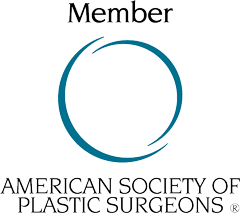
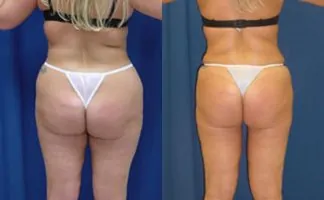
 Can I finance my Liposuction?
Can I finance my Liposuction?